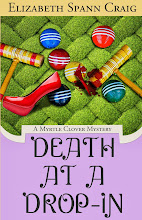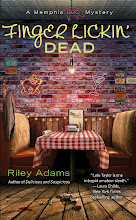 Although I live in a good-sized metro area (Charlotte, North Carolina), my suburb of Matthews is fairly small. It's small enough that, when I go out running errands, I have a couple of errand-running mom friends and acquaintances wave at me as I drive.
Although I live in a good-sized metro area (Charlotte, North Carolina), my suburb of Matthews is fairly small. It's small enough that, when I go out running errands, I have a couple of errand-running mom friends and acquaintances wave at me as I drive.
A couple of weeks ago, my husband and I decided to switch out our cars. I do most of the driving and his car makes fewer funny noises than mine does.
After making this switch, I've noticed that I’m getting a lot fewer waves. And I don’t think that everyone I know is mad at me. :)
But to them, part of who I am is a Honda minivan. I’m not a Honda Pilot to them. Their gaze just skips right over the car.
As I was out driving the other day and being ignored by my friends, I started thinking about habits and identifiers that can help establish characters in our readers’ minds.
I don’t know about you, but sometimes when I’m reading a book, I have a hard time immediately placing a character. The author, obviously, thinks that this character is someone that they’ve already established and they haven’t provided anything additional to jog my memory.
Because I find it frustrating as a reader, I try to make sure to somehow tag my supporting characters if they haven’t been onstage for a while.
One way to do this is obviously to say something like: Jane’s hairdresser, Sheri, opened the door.
Or: Sheri walked in. “Long day at the beauty parlor, y’all. Three customers didn’t show up!”
The first way is a total ‘tell,’ but fairly unobtrusive for the reader. The second way is a little more ‘show’ but still gets the job done and establishes the character for the reader.
Another way is to give the character a trait of some sort to identify them. This would need to obviously be a detail memorable enough so that a casual reader could tie the trait and the character together to remember them. This could either be a physical trait (an engaging dimple; cold, hollowed-out eyes, messy hair) or a habit or action (shifting from foot to foot, avoiding eye contact, looking at their reflection in every mirror, etc.)
The purpose of this identifier is really just so the reader isn’t wondering who the heck they are. But you could make it serve double-duty and have the identifier point to something that gives a little insight to the character: Jane thought again how odd it was that a manicurist would have nails bitten down to the quick. Actually, I think some of the actions I used in the example above can give some insight into characters, too.
Obviously, these identifiers can be overdone. If the secondary character is on stage fairly frequently, it would get annoying to have them reintroduced each time. The trait could get annoying, too, if done too frequently.
We also need to be mindful of clichés when making these identifiers for periphery characters. It’s easy to tag a supporting character with quick and easy tags that are stereotypical (awkward nerd, lady of the manor, dumb jock, etc.) I think that sometimes that a stereotype is a quick way to have our reader “get” a character…if the character isn’t very important to the story. If the secondary character is more important, then it’s probably worth it to flesh him out more and give him more dimension.
How do you help your readers keep supporting characters straight?













